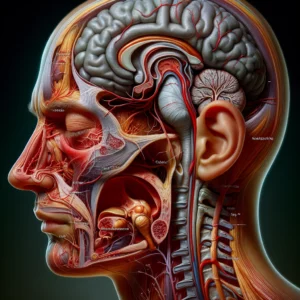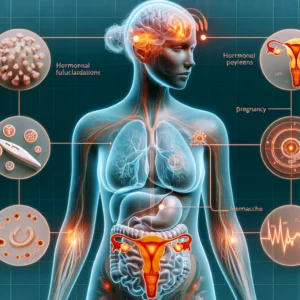Comprehensive Guide to Understanding Headache Causes and Proven Management Strategies
Headaches are a common health issue that can severely disrupt your daily life, affecting your concentration, productivity, and enjoyment of leisure activities. These discomforts come in various forms, each with distinct triggers and symptoms. Understanding the different types of headaches is essential for effective treatment and management. This knowledge enables individuals to tailor their approaches based on personal experiences and specific needs, leading to a more personalized and effective response to this widespread health challenge. By educating yourself about headaches, you can better navigate your treatment options and improve your overall quality of life.
Whether you experience occasional headaches or suffer from chronic pain, identifying the underlying causes is vital for pursuing effective therapies and making beneficial lifestyle adjustments. As you explore the complexities of headache management, consider looking into a variety of treatment options that include both traditional and alternative remedies. Methods such as balanced acupuncture, neurological acupuncture, and manual therapy can provide significant relief by addressing the root causes of your discomfort, empowering you to take charge of your health and well-being.
By exploring these diverse treatment options, you can embark on a holistic journey that not only aims to relieve headaches but also supports your overall health and wellness. Embracing a comprehensive approach will enhance your ability to manage headaches effectively and improve your life’s overall quality.
Key Strategies for Effective Headache Management
- Tension headaches are the most common type, often described as a constant band-like pressure around the head that tends to worsen during stressful periods.
- Migraine headaches are characterized by intense, pulsating pain usually on one side of the head, frequently accompanied by nausea, vomiting, and heightened sensitivity to light and sound, which can greatly disrupt daily activities.
- Cluster headaches are infamous for their excruciating pain that occurs in cyclical patterns, typically centered around one eye, making them one of the most painful types of headaches.
- Sinus headaches are linked to sinusitis and result in pressure and pain in the forehead, cheeks, and nasal areas, often aggravated by allergies or infections.
- Hormonal headaches, which predominantly affect women, are associated with hormonal fluctuations that can occur during menstruation, pregnancy, or menopause, requiring specific management approaches.
 In-Depth Analysis of Tension Headaches and Their Triggers
In-Depth Analysis of Tension Headaches and Their Triggers
Identifying the Key Patterns and Triggers Associated with Tension Headaches
Reflecting on your own experiences with tension headaches can help you uncover specific patterns and triggers. Factors such as prolonged periods of desk work, emotional stressors, or poor ergonomic setups can significantly contribute to the onset of these headaches. Recognizing these triggers is crucial for preventing future occurrences and maintaining your well-being. Common contributors to tension headaches include work-related stress, insufficient sleep, and even dehydration, all of which can exacerbate your discomfort. Keeping a detailed headache diary can help you track the timing and reasons behind these headaches, allowing you to take proactive steps to minimize their impact on your daily life.
Adopting a Holistic Strategy for Effective Tension Headache Relief
Employing a comprehensive, multifaceted strategy is often effective for alleviating tension headaches. Integrative therapies such as balanced acupuncture aim to restore energy flow throughout your body by targeting specific acupoints that may contribute to muscle tightness and stress. Additionally, incorporating relaxation techniques, such as deep breathing exercises or yoga, can significantly relieve tension while enhancing overall wellness. By addressing both physical and emotional stressors through a holistic approach, you can notably reduce the frequency and intensity of tension headaches, ultimately improving your quality of life.
Boosting Relief with Neurological Acupuncture and Manual Therapy Techniques
Neurological acupuncture can further enhance your relief efforts by focusing on the nervous system’s role in pain perception. This specialized technique targets the pathways involved in headache development, potentially modifying your brain’s responses to pain signals. When combined with manual therapy techniques, including massage or myofascial release, you may experience substantial relief from the tension that often exacerbates your headaches. Together, these therapies can create a synergistic effect, alleviating pain while promoting lasting relaxation and improved well-being.
 Comprehensive Insight into Understanding and Managing Migraine Headaches
Comprehensive Insight into Understanding and Managing Migraine Headaches
Migraines are not merely severe headaches; they represent complex neurological events that can incapacitate individuals for extended periods, sometimes lasting hours or even days. Characterized by intense, throbbing pain typically localized to one side of the head, migraines may also include symptoms such as nausea, vomiting, and increased sensitivity to light and sound. Various triggers, such as specific foods, hormonal shifts, and environmental factors, can instigate these debilitating episodes, highlighting the importance of recognizing and managing these influences for effective treatment.
To manage migraines effectively, a multi-layered approach is often required. While medications can provide immediate relief during an attack, integrating therapies such as acupuncture can significantly decrease the frequency and severity of future episodes. Neurological acupuncture specifically targets the pain pathways associated with migraines, potentially altering your brain’s response to pain signals and breaking the cycle of recurrent attacks.
When combined with manual therapy techniques that alleviate muscle tension and enhance blood circulation, you may discover a holistic strategy for effectively managing migraine headaches, empowering you to reclaim your daily life from the grasp of these distressing episodes.
In-Depth Understanding of Cluster Headaches: Patterns, Triggers, and Severity
| Metrics | Data |
|---|---|
| Prevalence | 1 in 1,000 adults |
| Age of onset | 20-40 years old |
| Duration of attacks | 15 minutes to 3 hours |
| Pain intensity | Severe, often described as the worst pain experienced |
| Frequency of attacks | 1 to 8 times a day |
Cluster headaches are known for being some of the most agonizing types of headaches. They often manifest as a burning or piercing pain that occurs in cyclical patterns or clusters. You may experience these attacks multiple times throughout the day over several weeks or months, followed by periods of total relief. The pain typically focuses around one eye or one side of the head and may come with additional symptoms like nasal congestion or tearing, amplifying the distress of the experience.
Given their intensity, cluster headaches necessitate swift and effective management strategies. While traditional medications can provide some relief, exploring alternative therapies such as acupuncture can significantly reduce the frequency and intensity of these painful episodes. By stimulating specific points associated with the trigeminal nerve—the primary nerve involved in headache pain—neurological acupuncture can help modulate your body’s pain response, potentially alleviating some of the burden linked to cluster headaches.
When combined with manual therapy techniques aimed at promoting relaxation and decreasing stress levels, you can achieve a more balanced and effective approach to managing these intense headache episodes, ultimately improving your overall quality of life.
 Effective Strategies for Addressing Sinus Headaches
Effective Strategies for Addressing Sinus Headaches
Sinus headaches typically arise when inflammation or infection in the sinus cavities leads to discomforting pressure and pain in the forehead, cheeks, and around the eyes. You may also experience these headaches alongside nasal congestion, facial tenderness, and sometimes fever. Understanding the underlying causes of sinus headaches is crucial for effective treatment, as they often stem from allergies or respiratory infections that can exacerbate your symptoms, resulting in a cycle of discomfort.
A combined approach of therapies can be particularly effective in addressing sinus headaches. Acupuncture has shown efficacy in reducing inflammation and enhancing drainage within the sinuses, providing relief from the pressure and discomfort associated with these headaches. Utilizing balanced acupuncture techniques specifically focuses on acupoints related to sinus health, while neurological acupuncture can target any associated pain pathways contributing to your suffering.
Additionally, incorporating manual therapy can alleviate tension in the neck and shoulders, which may further aggravate sinus pressure. This comprehensive, multifaceted approach can yield significant relief from the discomfort associated with sinus headaches, allowing you to breathe more easily and enjoy a more comfortable daily experience.
 Exploring Hormone-Related Headaches and Effective Management Techniques
Exploring Hormone-Related Headaches and Effective Management Techniques
Unraveling the Complex Relationship Between Hormones and Headache Patterns
Investigating the intricate connection between hormones and headache occurrences can empower you to take proactive measures in managing these specific headaches. Hormonal fluctuations, especially in women, can trigger painful headaches, often coinciding with menstrual cycles, pregnancy, or menopause. By identifying these patterns, you can better anticipate and prepare for potential headache episodes, thus managing them more effectively and improving your comfort.
Employing Natural Remedies for Hormone-Related Headache Relief
To alleviate hormone-related headaches, consider incorporating therapies that aim to balance your body’s energy and hormonal levels. Acupuncture has been shown to help regulate hormonal fluctuations by stimulating specific acupoints that influence endocrine functions. Furthermore, neurological acupuncture can enhance this approach by addressing the nervous system’s role in pain perception during hormonal changes, creating a more comprehensive treatment experience that targets the underlying causes.
Embracing a Holistic Approach for Effective Management of Hormone-Related Headaches
When combined with manual therapy techniques designed to promote relaxation and alleviate stress, you may discover a more effective way to manage hormone-related headaches. This holistic approach can help you navigate the complexities of hormonal changes, equipping you with the necessary tools to reduce pain and enhance your overall quality of life, allowing you to thrive even amid these fluctuations.
 Strategies to Break the Cycle of Rebound Headaches
Strategies to Break the Cycle of Rebound Headaches
Rebound headaches often occur as a result of overusing pain relief medications, leading to a cycle of dependency and an increase in headache frequency. You may find yourself reaching for over-the-counter pain relievers more often than necessary, only to experience worsening headaches as the medication loses its effectiveness. Recognizing this cyclical pattern is essential for breaking free from rebound headaches and regaining control over your health.
To effectively manage rebound headaches, it is crucial to reduce your reliance on medications while gradually exploring alternative therapies. Acupuncture offers a natural method to alleviate pain without resorting to pharmaceuticals. Utilizing balanced acupuncture techniques can help restore energy flow and promote relaxation, while neurological acupuncture targets the underlying pain pathways affected by medication overuse.
By integrating manual therapy techniques focused on relieving tension and reducing stress, you can develop a holistic approach to breaking the cycle of rebound headaches. This comprehensive strategy ultimately empowers you to reclaim control over your health and well-being, enhancing your overall quality of life.
 Effective Strategies for Understanding and Managing Mixed Headaches
Effective Strategies for Understanding and Managing Mixed Headaches
Mixed headaches present a unique challenge as they incorporate characteristics from various headache types, complicating both diagnosis and treatment. You might experience symptoms similar to tension headaches one day and migraines the next, making it crucial to tailor your management strategy based on your specific symptoms. Understanding the complexities associated with mixed headaches is vital for developing a treatment plan that aligns with your individual needs.
Consider adopting a comprehensive approach that includes various therapies to effectively manage mixed headaches. Acupuncture can be particularly beneficial in addressing the diverse symptoms linked to mixed headaches by targeting multiple acupoints relevant to different headache types. Additionally, neurological acupuncture may assist in modulating pain perception across various pathways, while balanced acupuncture promotes overall wellness and alleviates discomfort.
Moreover, manual therapy techniques can effectively relieve muscle tension and stress that may contribute to headache development. By integrating these varied approaches, you can formulate a personalized strategy for managing mixed headaches, significantly improving your overall quality of life.
Common Questions About Headaches and Their Management
What types of headaches are there?
There are several distinct types of headaches, including tension headaches, migraines, cluster headaches, sinus headaches, and hormone-related headaches. Each type has unique characteristics and treatment options, necessitating tailored approaches for effective management.
Can you provide more information about tension headaches?
The Article Types of Headaches Explained: A Comprehensive Guide appeared first on https://mcrtherapies.com
The Article Headache Types Explained: Your Comprehensive Guide Was Found On https://limitsofstrategy.com

This guide provides an invaluable resource for anyone affected by headaches, as they often impact not just physical health but mental and emotional well-being as well. I particularly appreciate how you emphasize the importance of personalizing treatment approaches. In my experience, keeping a headache diary has helped me identify specific triggers—like certain foods or stress levels—and led to a significant reduction in the frequency and severity of my headaches.
This guide provides such a valuable and nuanced perspective on the multifaceted issue of headaches. It’s intriguing to see how often these common ailments can be overlooked or trivialized, despite their significant impact on one’s daily life. Personally, I’ve experienced various types of headaches throughout the years, from tension and migraines to the occasional cluster headache, and I’ve come to appreciate how important it is to differentiate between them in terms of both triggers and treatments.
It’s really eye-opening to hear about your experiences with different types of headaches. I think it’s easy for folks who don’t suffer from headaches to underestimate how disruptive they can be. When you’re in the midst of a migraine or a cluster headache, it’s tough to focus on anything else, right?
It’s fascinating to see a comprehensive guide dedicated to such an impactful health issue as headaches. Personally, I’ve found headaches to be frustratingly elusive. There have been times when I could trace the cause back to stress or dehydration, yet there are periods when they come out of nowhere, leading to a sense of helplessness. Your emphasis on understanding the different types of headaches really resonates with me; I think often people underestimate how distinct the causes and triggers can be—not just between various types, but even within the same category.